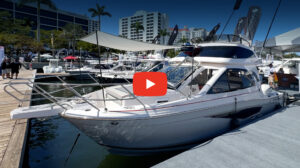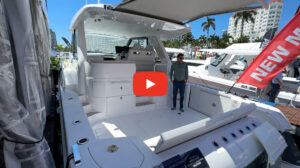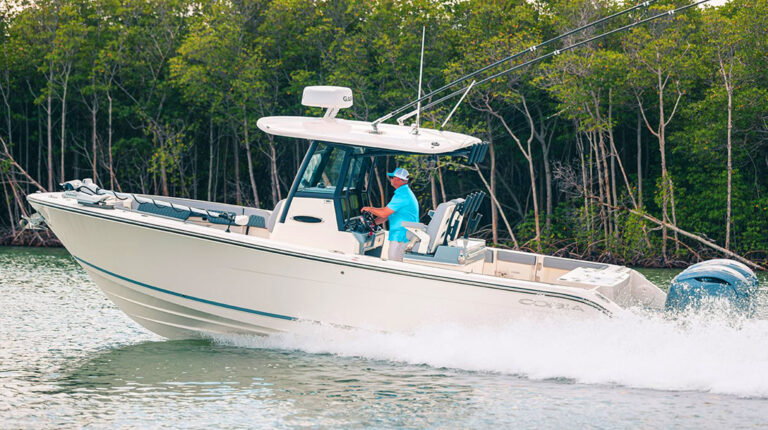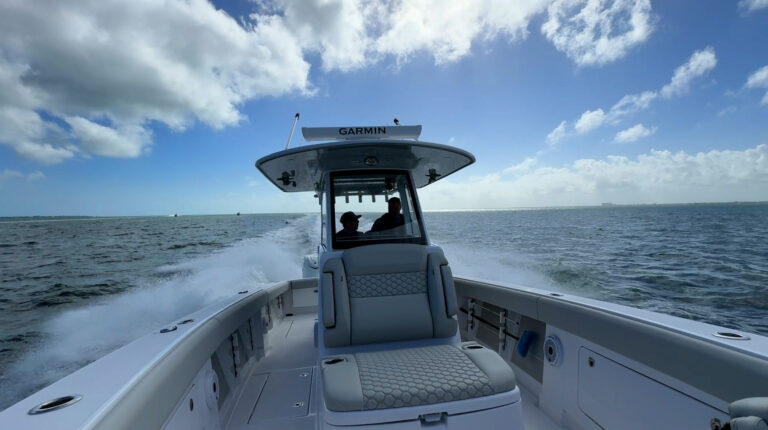When Biocides Don’t Work
Five hard-earned lessons about dealing with dirty fuel tanks.
Some years back I purchased a 32-foot lobster boat powered by a single diesel. I got a great deal because she’d spent a year on the hard in Texas where no one wants a Down Easter. Her owner finally trucked her to Maine where she sat for six months before I found her.
The deal being concluded, I prepared to run her down to my slip in Connecticut. I rigged her out with GPS, stocked her with food and drink, and the night before I left, topped off her tanks. As I was doing so I saw a guy running the fuel in another boat through a stationary filter and thought, “It’d probably be a good idea to do that before I shove off.” I asked him if he could do my tanks early the next morning but he was booked. So I did what I thought was the next best thing: I bought two bottles of biocide and poured one into each tank.
It took me four days to make the trip south, about a day longer than it should have because I had to stop a dozen times to change fuel filters clogged with primeval goop. The last incident was the worst: The engine quit right in front of my Connecticut marina (and dozens of onlookers), and I had to be towed into my slip.
It took two more years and you-don’t-wanna-know-how-much money before I solved the problem, and during that time I learned a lot about fuel-tank contamination, most of it the hard, expensive way.
Lesson One:
You can have a contamination problem and not know it. In fact you might run your boat for quite a while with no symptoms. It wasn’t until I hit a nasty chop that my engine misfired. That’s because contamination lies on the tank bottom beneath the level of fuel pickups until something, like rough seas, stirs it up. In other words, you’ll never know you have a problem until you’re in precisely the situation in which you can’t afford to lose an engine.
Lesson Two:
Biocides kill algae-like growth. That may sound great, but it can actually end up producing more stuff that will contaminate your filters. If you’re lucky the dross will be trapped by the filters but not clog them. When I added biocides I was confident I’d solved the problem when I’d probably compounded it.
Lesson Three:
Multiple doses of biocide will not dissolve an accumulated layer of contamination. I figured that if I kept adding biocide and kept changing filters I’d eventually get rid of the contamination. Unfortunately, not so. I later learned that calling this stuff algae is misleading; it’s actually something called asphaltene, which when undisturbed can coalesce into a solid that is extremely difficult, if not impossible, to dissolve by chemical means. The top layer may be loose and liable to dissolution but the underlying layer probably won’t be.
Lesson Four:
Fuel cleaning will remove suspended contaminants and loose contamination on the bottom of a tank but will have little effect on a compacted bottom layer. I ran my fuel through a remote filter cart three times with virtually no effect. The last time the technician correctly concluded that I had a solid layer on the bottom and cranked up the return pressure in order to break it up. Good theory, but the fuel filters clogged shortly thereafter.
Lesson Five:
There’s only one way to solve a serious fuel contamination problem, and it’s expensive. My salvation arrived in the form of a foreman at Sailcraft Services in Oriental, North Carolina, where I’d had my boat trucked for the winter. After listening to my tale of woe he told me to forget about additives and fuel cleaning and put someone inside the tanks where he could manually clean them. Since my tanks had no access ports, they’d have to be installed.
It was expensive—about $3,800—but it worked. The foreman cut ports into each tank, then wailed on the insides with a stiff steel scraper. It took him a day for each tank, and what came out looked just like asphalt, so dense and compacted I could see that nothing but sweat labor would have ever dislodged it.
None of this is to say that biocides and fuel cleaning don’t have their place. I still recommend using a biocide annually, but only as a prophylactic. I also recommend fuel cleaning if a boat has sat unused for a year. But the main thing I’ve learned is that every fuel tank should have an access port so it can be inspected and manually cleaned. Sooner or later there’s going to be a problem, so better to be prepared before your engines sputter and die. Believe me, I know.










